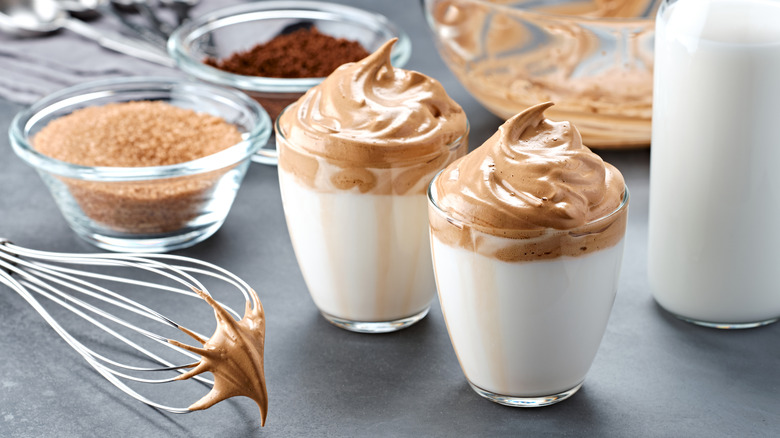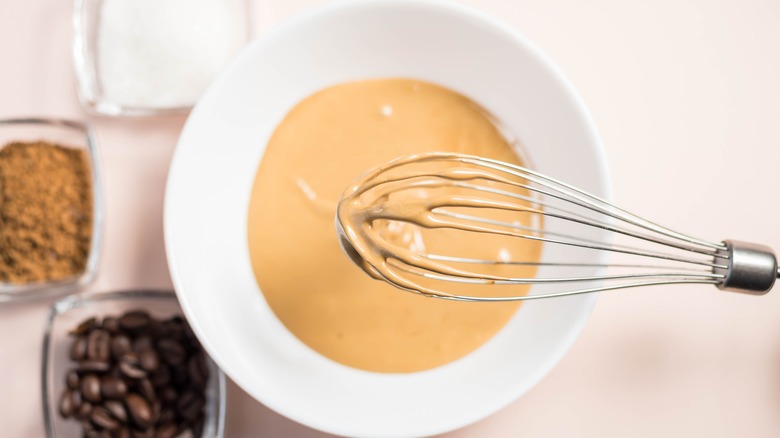The Science Behind Dalgona Coffee
There were many reasons to be unhappy when most of us sheltered in place during the height of the coronavirus pandemic, but for those of us who enjoyed that bit of extra time in the kitchen, there were many reasons to be grateful, too — and that included expanding the repertoire of dishes we were able to cook.
One of the first dishes (which eventually became a social media sensation) was dalgona coffee, the Korean whipped drink that might have been new to us, but is enjoyed in other food cultures like Greece, where it is known as "frappa" per Leite's Culinaria, and India, where it is called "beaten coffee," per Cookpad.
Like many of us, Science Borealis' chemistry editor Joanie Tian couldn't work out why, or how, just three ingredients — instant coffee, sugar, and water — could froth up and make such an Instagram-worthy drink, especially since sugar and water aren't exactly known for their ability to become foam. Of note, she discovered that the type of coffee you used to make dalgona mattered, since the cheaper the coffee, the more foam you could whip up.
It was during the course of her research that Tian discovered there were, in fact, "two types of coffee: spray-dried and freeze-dried." While spray-drying involves making coffee and then drying it out to create a powdered concentrate, freeze-drying calls for a more complicated process, which not only preserves more of the coffee's flavor molecules but also its oils. Cheaper coffee uses the spray-dried method, and according to Tian, its lack of oils is exactly why it's able to foam up so well.
Dalgona uses a similar chemical process to meringue
But aside from knowing what instant coffee to use, what exactly is happening with the coffee, sugar, and water to make dalgona coffee possible?
Popular Mechanics reached out to professor of chemistry Tom Kuntzleman of Spring Arbor University for a dalgona explanation; Kuntzleman explained the reason instant coffee, sugar, and water becomes dalgona (which means "honeycomb toffee" in Korean, per the "Today" show) is similar to the process used to make meringue, which calls for egg whites to be whipped at very high speed.
In order to make meringue, equipment must be dry and there cannot be any egg yolk present to contaminate the whites, otherwise the science won't work. An egg white is 90% water and 10% protein. Per the Exploratorium, whipping up egg whites introduces air into the mixture and ultimately, as bubbles form, the egg proteins coat the bubbles and create separation of the water molecules, allowing the bubbles to stay intact for longer. The water molecules, meanwhile, turn into a bubble film versus bonded H2O, which as we know, doesn't foam (but pop).
Popular Mechanics explains the dalgona mix has a similar composition of proteins, fiber, and minerals, and a very small amount of fat (especially when using spray-dried instant coffee and its lack of oils), which allows it to foam up; further, dalgona's sugar acts as a glue that holds the foam together, keeping the mix light and airy.
Professor Kuntzleman also successfully made dalgona using salt instead of sugar; however, we don't imagine it's something you'd want to try, unless you had no plans of drinking the dalgona coffee, that is.

